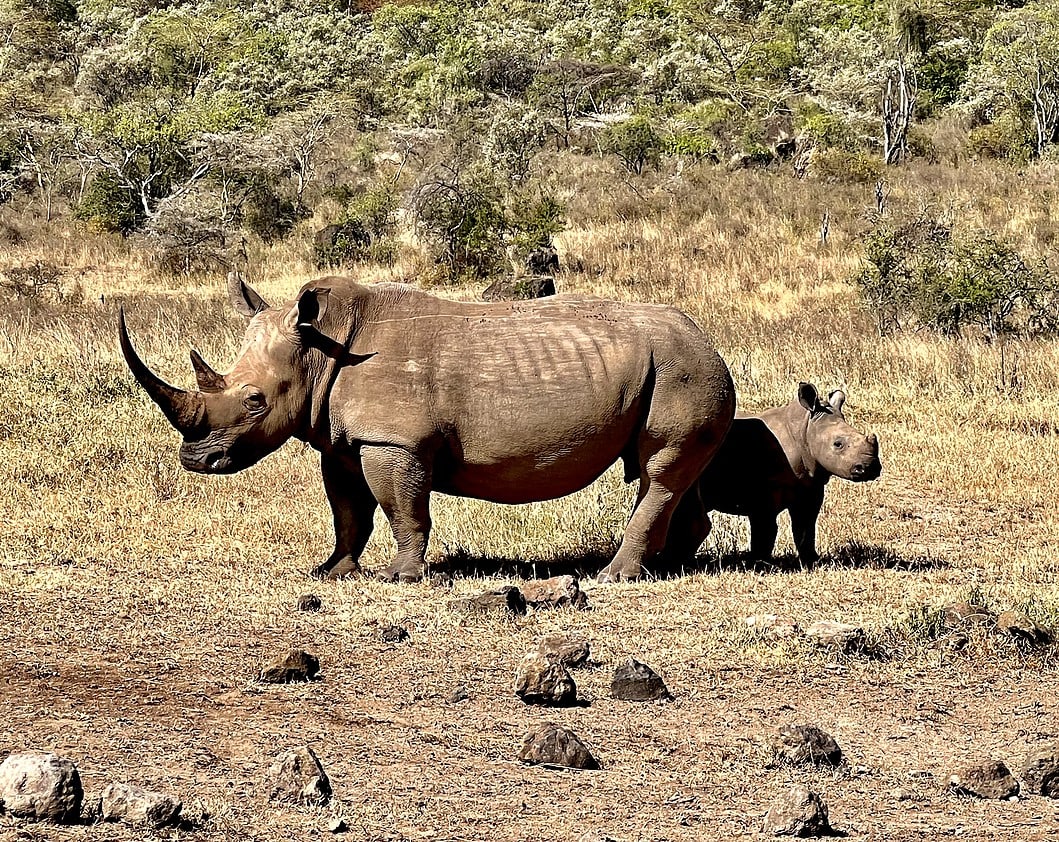Sunniva and Ylva were off from school, and Beatrice was craving a long weekend out of town, so what better option than wonderful Lake Nakuru National Park, less than a three-hour drive from Nairobi (under normal traffic conditions). Kenya’s flamingo haven is a perfect weekend getaway for Nairobians. It is also a natural part of any safari itinerary, so I guess those of us who live nearby are just lucky!
A park teeming with wildlife
Lake Nakuru is a vibrant wildlife habitat, featuring an impressive variety of animals, including four of the big five: lions, rhinos, leopards, and buffalos live side by side here. Only the elephants are missing, but on the other hand, the 188 km² is also home to rothschild giraffes, olive baboons, impalas, waterbucks, hippos, colobus monkeys, spotted hyenas, zebras, gazelles, and pythons, to mention a few.


















With all this wildlife concentrated in a relatively small area, you will never drive for more than a few minutes before running into a picture-worthy animal. Contrary to the Maasai Mara, where the sounds of animals create a pleasantly noisy backdrop 24/7, however, Lake Nakuru National Park is almost dead quiet at night! A good place for light sleepers, in other words. Not that I’m one of them..
Black and White Rhinos, or Just Some Shades of Grey?
The park features both black and white rhinos. Both are actually dark grey, irrespective of their colorful misnomers. Allegedly, British settlers in South Africa misunderstood the term “wijd” (meaning “wide”) in Afrikaans. Hence, the wide-mouthed, or square-lipped rhino became known as “white”, whereas the hook-lipped counterpart was labeled “black” to distinguish it from its mislabeled relative. With only 6,000+ individuals living in the wild, the black rhino is considered “critically endangered”, while the southern white rhino (~16,000 individuals) is categorized as “near threatened”. The northern white rhino is already functionally extinct, following the death of the last male in 2018.
Lake Nakuru – A Flamingo Haven
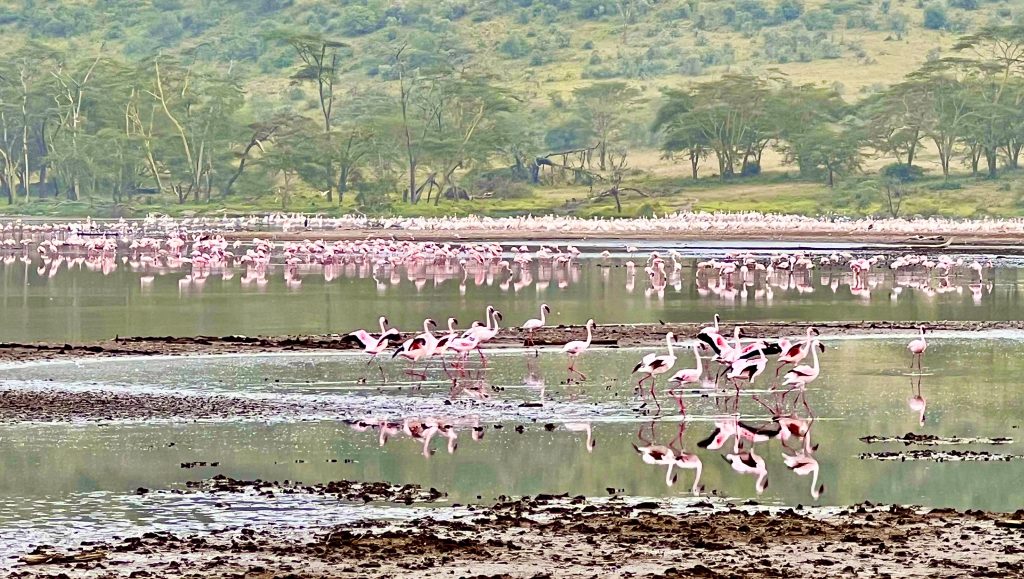
No animal epitomizes Lake Nakuru like the flamingos, though. Historically, it is one of their most famous sanctuaries, and while the birds no longer number millions, as they did at the beginning of the century, you will find them by the thousands if not tens of thousands by the shores every morning.
In addition to the flamingos, you are unlikely to miss a few hundred pelicans idling by the shores, waiting to pose for a photographer like you or me. A marabou stork or ten can also be taken pretty much for granted.
Lions
The 16-or-so lions living here are easy to come across. On a morning game drive, you are quite likely to see the kings of the jungle rising with the sun, or sleeping in trees later in the day.
Rothschild giraffe
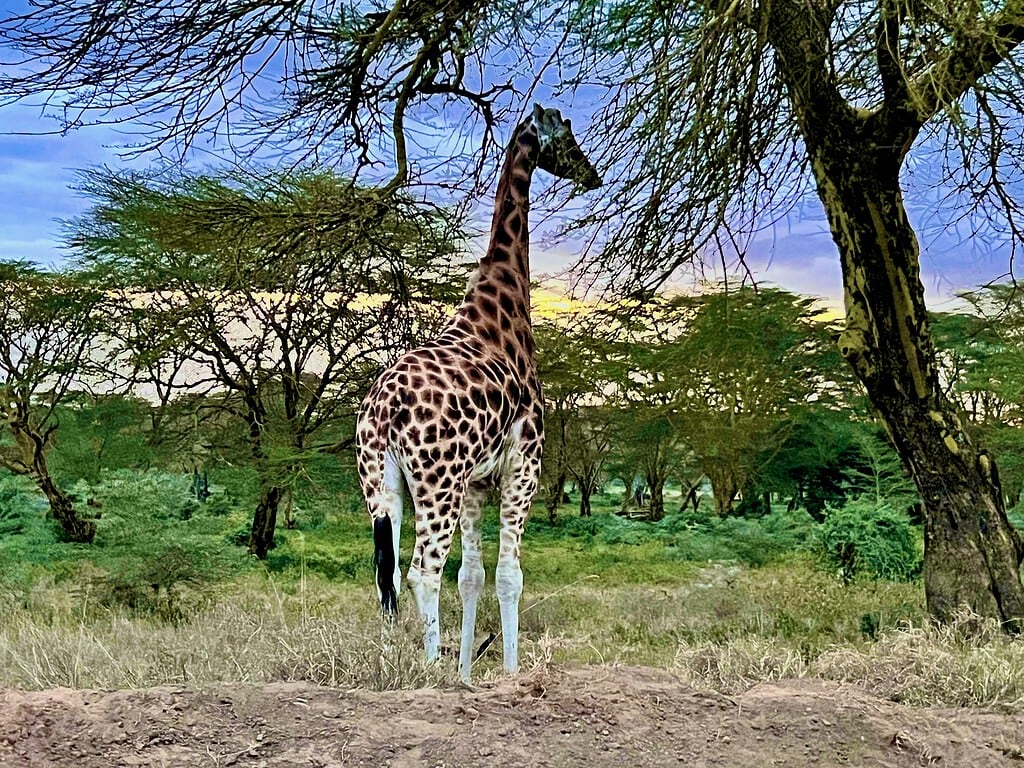
Lake Nakuru National Park is also one of the few remaining habitats of the Rothschild Giraffe, a subspecies of this mesmerizing African animal. The ~1,400 individuals still living in the wild are characterized by their white legs, creamier hue, and less sharp patches than the much more common reticulated giraffe. While categorized as Near Threatened by the IUCN, they are easy to come across here.
Rising water levels
At the turn of the century, scientists feared that the Rift Valley lakes would dry up within years. Au contraire, however, they have all risen significantly over the past decade. By 6.4 meters since 2014 in the case of Lake Nakuru, expanding its surface from 43 km² to 68 km². The vast tracts of dead trees adorning the shores are today a signature feature of the park, showing the extent of the rising water level.
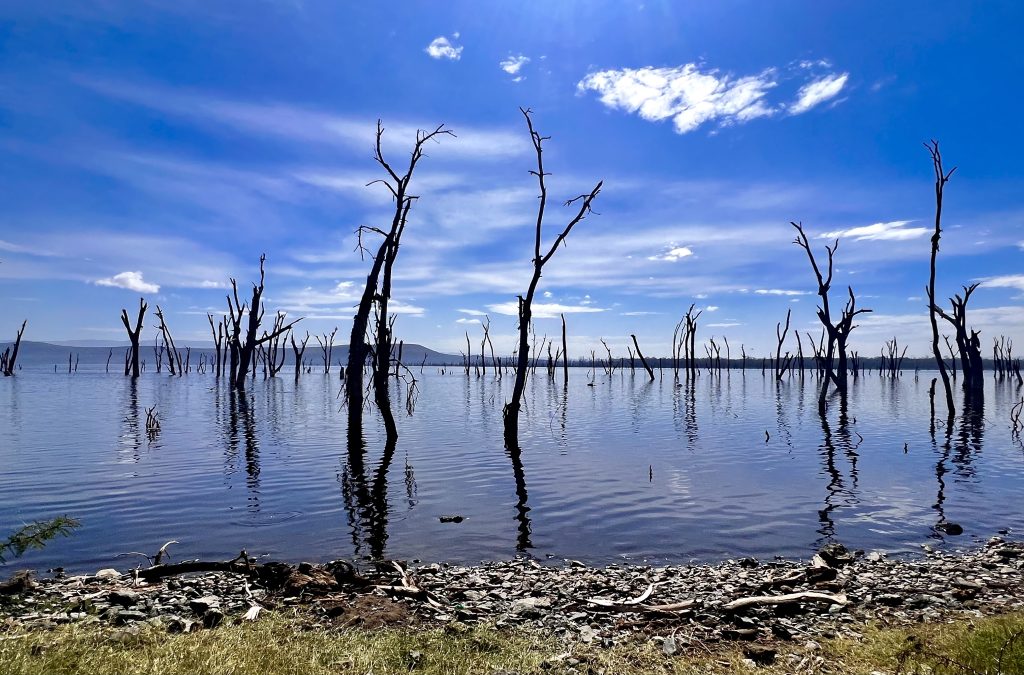
The Makalia Falls at the southern end of the park are not huge, but quite pretty. Swimming in the dam below could have been a compelling prospect if only the water had been a bit cleaner..
Baboon Cliff and Lion Hill
The two highest and most famous viewpoints of the park are called the Baboon Cliff and the Lion Hill. Facing each other from opposite sides, both offer breathtaking views.
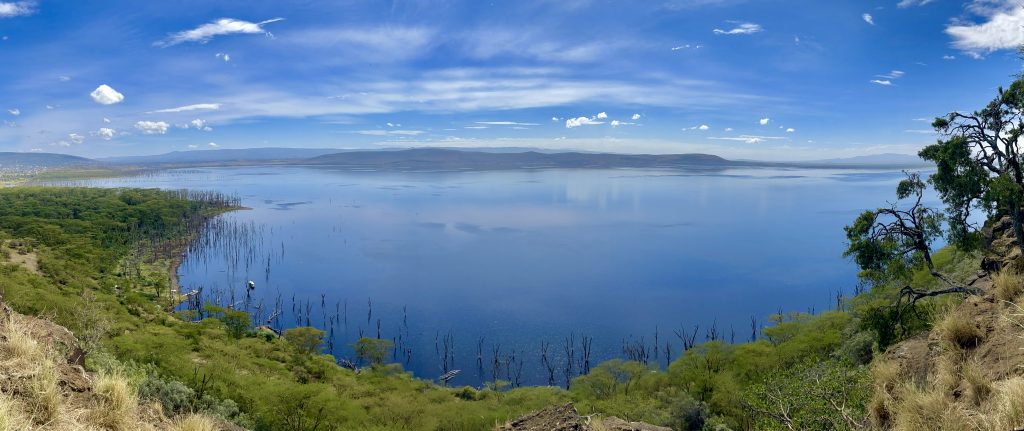
From a farm to a conservancy to a national park
Originally a privately owned farm, the core land of the park was donated to the colonial government in 1961 by the Britten-Long family, on condition that it remained a conservancy. It was gazetted as a national park and expanded to its current size in 1968.
The old farmhouse still exists in its initial shape, as part of Lake Nakuru Lodge. The owner, Mr. Joseph Muya, is an avid conservationist and also deeply preoccupied with preserving Kenya’s cultural heritage. The farmhouse, therefore, has been meticulously renovated, with a selection of the rooms restored to their original early-20th-century style. Other than at the Karen Blixen Farm, few similar settings exist in Kenya, at least to my knowledge.
Getting there by road
While the Nairobi-Nakuru road is in a much better condition than its horrendous state under former kleptocrat Daniel arap Moi, occasional traffic jams are still an inevitable fact of life. That may change soon, with the announced construction of a dual carriage four-lane expressway that could shorten the ride to less than two hours.
Kenya has experienced a continuous infrastructure boom for two decades since the election of Mwai Kibaki in 2002. Removing the headache of road congestion between Nairobi and Nakuru would be a major boost for the economy while making this beautiful park even more accessible to Nairobians and international visitors alike!
